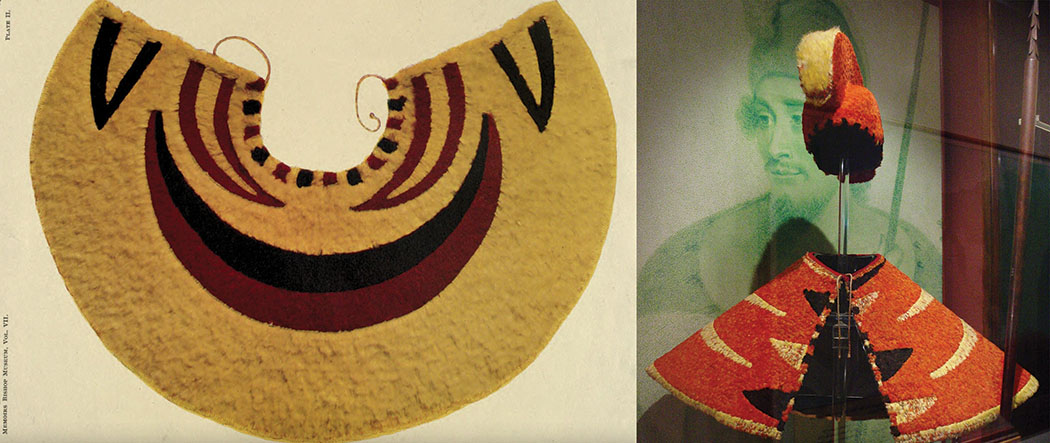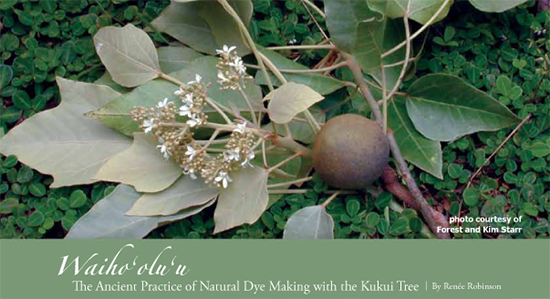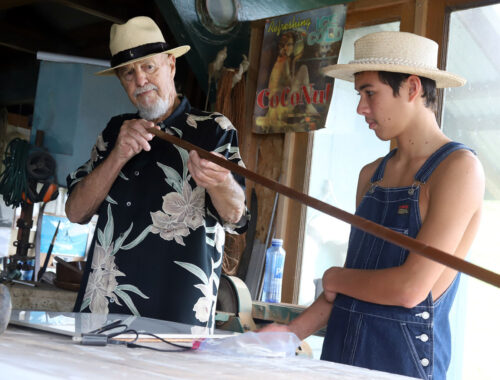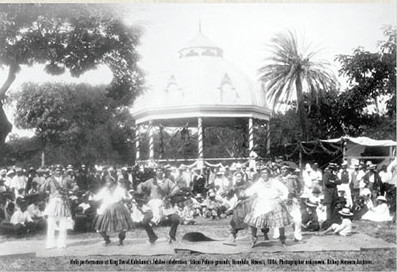
Celebrating the Traditional Hawaiian Lū‘au
 By Shana Wailana Logan
By Shana Wailana Logan
Mele Komo
E hea i ke kanaka e komo maloko,
E hanai ai a hewa waha;
Eia no ka uku la, o ka leo,
A he leo wale no, e!
Welcoming Song
Call to the man to come in.
Eat till the mouth is satisfied;
This is the reward, the voice,
Simply the voice!
A Traditional Greeting
A “mele komo” is the beckoning, melodic call of a traditional Hawaiian host who receives each visitor as a guest of honor, welcomed as ‘ōhana (family) with aloha.
Today, the modern lū‘au, once called ‘aha ‘āina, is a popular island gathering which still calls visitors to come, sit, and enjoy what the land and sea has to offer.
In Hawai‘i, there are many lū‘au celebrations such as birthdays, graduations, and weddings which are meant to bind friends and family in the enduring spirit of aloha and lōkahi, togetherness. Historically, Hawaiians had not always eaten together, however. Governed by a sacred system of ancient eating restrictions called ‘ai kapu, men and women, as well as commoner and chief ate separately, and certain foods such as bananas and pork were only eaten by men.
Things changed, however, during the reign of King Kamehameha II (1819–1824), when his father, Kamehameha I (1782–1819) passed away and a period of ‘ai noa began in which everyone was permitted to openly eat together without fear.
A Royal Lū‘au
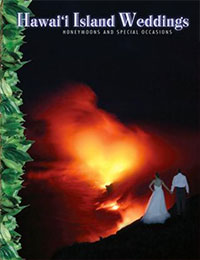
King David Kalākaua, Hawai‘i’s last ruling king (1874–1891), held a fabulous gala during his reign, inviting the entire Hawaiian Kingdom in celebration. In November of 1886, His Majesty presented a royal feast for his 50th birthday, his “Silver Jubilee,” complete with a full display of Hawaiian mele (song) and hula (dance) and an overflowing banquet of delicious island bounty.
It was a historical event, on record as having over 1000 guests of all stature and backgrounds bringing gifts from near and far. Held at the famed and illustrious ‘Iolani Palace in Honolulu, the King’s Jubilee lasted for two weeks in which all of the people ate, sang, danced, and made merry, even enjoying a parade down the middle of town.
Ko Hawai‘i Pae ‘Aina, one of the local newspapers of the day reported, “After 3 o’clock in the afternoon of this Tuesday, the King, the Princes and Princesses, the dignitaries, and the makaainana sat at a long table housed by a pavilion with corrugated iron roofing (lanai pili hao), which could sit an estimated 600 to 900 people at a time. There was much Hawaiian foods supplied, like laulau (puaa hoolua) and roasted pork (puaa kalua kele); fish wrapped in ti leaves and baked (lawalu) and raw (aimaka); baked beef (i‘o pipi hoolua) and all types of poi spoken of…”
‘Ōhana Means Family
A family lū‘au is more than just a gathering to celebrate a special event: it is the outward showing of love, commitment and unity that the ‘ōhana brings to each individual. In Hawai‘i, the ‘ōhana is central to the perpetuation and stability of the entire community, and as a means to feed everyone, the lū‘au is key.
It all starts months before the date of the event, when the hunting, fishing, gathering, and other preparations actually begin. The main menu will usually include such mea‘ai (food) as kalua pork, laulau, lū‘au stew, fried i‘a (fish), ‘opihi (limpets), crab, lomi salmon, ‘uala (sweet potato), haupia (coconut pudding), and poi (taro paste).
The main dish, shredded pork, begins with a huge pig that has been hunted or raised and when cooked, is prepared in kalua style, steamed for many hours with hot lava rocks in an underground pit called, ‘imu. Laulau and lū‘au stew are both made primarily with cooked taro leaves, coconut milk and pork, chicken, fish or beef.
Fried i’a is fried fish, and some local favorites include ‘ahi (tuna), ‘ono (mackerel), moi (threadfish) and kūmū (goatfish). ‘Opihi is a shellfish, collected on the rocky shores of the Islands and gathered at great personal risk, as fisherman must deal with swelling ocean waves crashing upon large seaside boulders where they are found.
The modern dish, lomi salmon is usually made from salmon shipped in from abroad, not caught locally, as this was not a traditional menu item in ancient Hawai‘i where salmon is not found. Lomi means to massage, and for this dish, the ingredients of salmon, tomatoes, and yellow and green onions are mixed together by hand and seasoned with Hawaiian salt.
Sweet potato is ‘uala, usually cooked whole in the ‘imu along with the pig. A coconut pudding called haupia is the sweet compliment to this mainly salty menu, served cold and jelled in a long sheet-cake preparation, eaten along with the rest of the meal. Often in today’s lū‘au fare, one will find the pineapple, a modern island favorite with origins in South America. Finally, an authentic Hawaiian lū‘au is not complete without the island staple of kalo (taro), either steamed and cut or kneaded and pounded into the fresh, starchy paste known as poi.
Kalo: The Sacred Food
For many visitors, eating poi is an acquired taste. For Hawaiians, eating any part of the kalo plant is a sacred act which dates back to a time when the early Polynesians told of the first human, Hāloa. According to the sacred Hawaiian creation chant, the Kumulipo, Hāloa was the very first human, sent down from the stars and tied closely to the earth through an elemental genealogy. This deep, historical connection to the kalo is a vivid story of creation and is the basis for the family unit. All parts of the plant work together as a family unit, each integral to the future of the other. This is why, for generations, the kalo has been the sacred food of the Hawaiian people, for it represents the perpetuation of humankind as a source of sustenance and life, and has been a part of the lū‘au for generations.
Male ‘Ana
A wedding in old Hawai‘i was called a male ‘ana, a time to celebrate the union of two people in love. The lū‘au was known as an ‘aha ‘āina male, usually lasting days as the couple reveled in the festivities amid friends and family. The tradition lives on today, as each member of the ‘ōhana pitches in to provide the bride and groom with a happy occasion filled with cherished memories.
A special hula is usually performed by the bride or a close family member, in honor of the couple. The couple will also dance to a favorite song as they are serenaded by a live band playing a beautiful, romantic ballad. Draped with maile lei, the groom will lead his bride, herself graced with a fragrant, white lei such as ginger or pīkake (jasmine).
True to local customs, guests will then approach the couple and place various dollar bills on the floor nearby the duo for posterity. Following this, there is usually a moment of brevity when the bride will lift her dress just enough to reveal a garter belt around her thigh filled with money which the groom will then kneel down to remove from her leg and toss to the crowd of men who try to catch it. The throwing of the bouquet by the bride is also a significant part of the event, where single women will try to catch it for a chance to be the next bride. The love and aloha flow freely, as everyone dances and celebrates the night away.
Memories
Timeless memories are created at a Hawaiian lū‘au, ones that will last forever. Family and friendship ties are woven tighter and stronger through this shared, joyful event. This is what attracts thousands of visitors to seek this experience, drawn to the Islands to say their wedding vows and enjoy a romantic honeymoon under balmy skies, paying to attend a commercial lū‘au, complete with tiki torches and a Polynesian dance revue.
However, a genuine lū‘au offers much more than that. It is an age-old tradition that defines the authentic Hawaiian celebration and the commitment of a people to thrive despite any and all obstacles. It is a positive and real way to be as one with each other, with the land, and with the sea. The lū‘au is indeed a special moment of bringing all people together in the spirit of laulima, many hands working together, and aloha, where everyone is welcomed with open hearts.
The Authentic Hawaiian Lū‘au
“When I was younger, our church, the Keaukaha Church of allowing the church to fundraise. When it was lū‘au time, from kupuna to youth, they all had a job to do in preparing everything,” says Terri Napeahi, owner of Papa Mū Native Hawaiian, LLC. “My father, Robert Napeahi Jr., was the one in charge of the ‘imu, waking up early in the morning. If the party started at 6pm, he would start the ‘imu at 2am in the morning so it would be timed just right, out of the ‘imu (took about 12 hours to cook). He had a big job because these lū‘au were really big. I loved getting up early with my father to do the ‘imu. Sometimes feeding 2-3,000 people, we served them, with about 5-6 pigs coming out of the ‘imu. He used ‘ōhia, and created a huge fire to heat the pōhaku [rocks].
“The servers were the kids, and they had it all ready to serve. That was our job as a youth: we served each dish. The serving line was filled with every dish we made – our whole entire congregation did it. Everything was done as a huge congregation. We would gather and prepare the coconuts for the haupia, cut the tomatoes and onions for lomi salmon and freeze them. Every day was a separate day of putting together a separate dish. The poi was a huge deal. We cooked the poi ourselves, so there were big pots of taro that people donated from their farms in Panaewa. We had uncles and aunties who grew it in large quantities. They cooked them in big barrels, I remember, but before they cooked it, we had to clean it (itchy, I remember). There was a kaona [deep meaning] for mixing: it had to do with the hand. Some people were chosen to mix the poi, and if the wrong person did it, the poi would sour. It is a practice never talked about, but I remember my Grandma Abby Napeahi was one of them, along with aunty Hannah Pakani. I remember them mixing the poi in big plastic containers – they were big. They had poi tables and the men would grind the poi into pa‘iai poi [thick poi], and the day of the party, the women mixed it down to a paste. Aunty Hannah always wore rubber boots, like all the women in my church, because they all were farmers. They laughed and talked in Hawaiian while they worked.
“The experience I had working with the community, we are all related somehow, so coming together was exciting. It was work, but everybody enjoyed it, and their position in that work. Uncle Luka Kanaka‘ole did the grinding of the coconut, and he enjoyed his job. We all did.
“The best part of the lū‘au: the young and old working together. So in the final preparation stage, the plates, the napkins and forks, the bowl poi…everything was set at a table. They didn’t stand in line, they sat at the table. The tables and chairs were covered with paper. We had to decorate it with banana stumps, laua‘e or other ferns, and also provided the entertainment. We all sang. My mother sang falsetto, and my grandfather would play with Uncle Howard Pe‘a all the old songs.
“We then would pule (pray), then eat. All night, we served them, until the end. No lines. It was tiring, but we never grumble, and it was good fun. At the end, we all cleaned up and it was exciting.
“I miss those days and how real it was, not like today. Before, everybody was together like a family in Keaukaha. That’s why today, I started my initiative to create a space so that I could assist in raising the level of self-esteem for our people, to let our people come in and participate. Our focus is on the Hawaiian people. It’s a business, but it is not about the money. I wanted a specialized, unique product that could be competitive in the market and still be authentic.
“When I went up to live in Mountain View, I began learning about subsistence gathering and native rights from my mentor, Palikapu Deadman, who had the idea that we should do an ‘imu, so that’s what we did. We decided to certify it so we could sell our food. The ‘imu was my first product and I started packaging my meat and selling it on the state level then on the federal level with exporting out of Hawai‘i. It’s in stores now under the Papa Mū Native Hawaiian, LLC brand. You can find it in KTA and other Hawaiʻi Island supermarkets. It costs more, but you cannot match the taste, the quality, and the authenticity of the meat, which is not liquid smoke, like the others. I am the only USDA certified company in the nation to sell food from a traditional ‘imu.”
“Our ‘imu today is connecting people with the real, old style of cooking food, with that rich flavor of the pōhaku, the ti leaf, the banana…all part of the traditional way that cannot be duplicated in the oven. We are sharing our authentic culture and traditions with the world, which is what I always wanted to do,” says Terri. “Just like the old days.”
